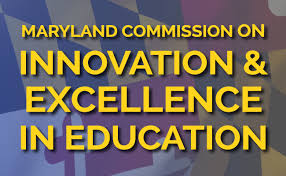
One of the frequently covered topics in higher education is the cost of college and specifically, the reduction in state funding for their public institutions. Less covered nationally is adequacy of the cost of K-12 education. In 2016, the Maryland governor and legislature jointly formed the Commission on Innovation & Excellence in Education, also known as the Kirwan Commission after its chair. The goal of the bipartisan Commission was to research successful school systems globally and make recommendations to make Maryland’s world-class. Governor Larry Hogan appointed two people to the commission, and the state senate president and house speaker appointed five persons each. There were an additional eight members appointed by the State Board of Education, Maryland State Education Association, Baltimore Teachers Union, Maryland Association of Boards of Education, Public School Superintendents Association of Maryland, Association of School Business Officials, Maryland PTA, and the Maryland Association of Counties.
The Commission issued two interim reports and one preliminary report before presenting its findings in October 2019, recommending that Maryland increase its annual spending on education by $3.8 billion to be phased in over the next decade. While a precise funding formula has yet to be negotiated between the state and counties, the Commission has recommended that it be split approximately 50/50 between the state’s portion and that covered by Baltimore City and 23 counties. On the surface, it’s hard to argue against recommendations such as requiring higher credentials for new teachers and increasing teacher pay, funding for pre-kindergarten, and funding for schools with many children living in poverty.
While the Commission is scheduled to sunset on December 31, 2019, the Maryland General Assembly will address the recommendations in January and the discussions and debates have already begun. Governor Hogan ran on a campaign to repeal many tax hikes initiated by his predecessor, Martin O’Malley. His reaction to the estimated costs of the proposed recommendations is to couch the Commission as the Kirwan Tax Hike Commission and suggest that the recommendations will cost every Maryland family $6,000 annually in increased taxes if enacted. The incoming senate president, a member of the commission and teacher, has countered that hypothesis.
I applaud Maryland’s politicians for establishing the Kirwan Commission. Maryland’s interest in improving the quality of K-12 education is likely in the top quartile of all states in the U.S. Unlike the higher education funding debates underway in other states, these costs are mandated by state law. Given the Democratic majority in Maryland’s legislature, I anticipate that many of these proposed changes will be approved, provided that they can reach agreement with city and county officials on future funding obligations.
While Maryland’s median household income is among the nation’s highest, approximately 33% higher than the U.S. average, such initiatives in lower-income states would likely never be enacted. As a taxpayer and educator, I believe in investing in education for the future of our children and grandchildren. I also recognize that higher-taxed individuals and corporations have options to relocate to lower-taxed states. Balancing needs with committed spending and required funding is a delicate process consuming more and more legislatures.











